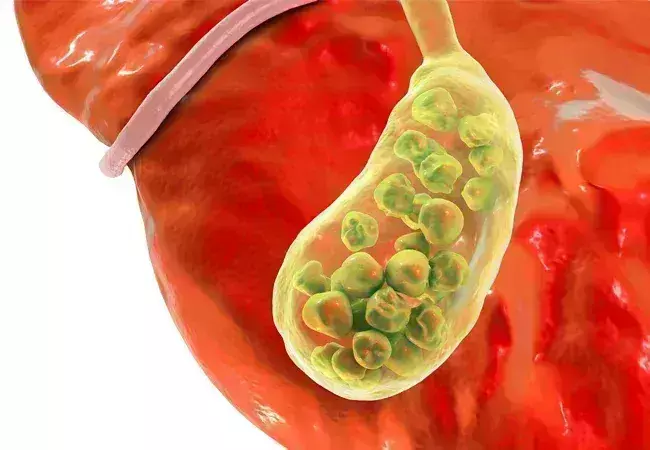- Home
- Medical news & Guidelines
- Anesthesiology
- Cardiology and CTVS
- Critical Care
- Dentistry
- Dermatology
- Diabetes and Endocrinology
- ENT
- Gastroenterology
- Medicine
- Nephrology
- Neurology
- Obstretics-Gynaecology
- Oncology
- Ophthalmology
- Orthopaedics
- Pediatrics-Neonatology
- Psychiatry
- Pulmonology
- Radiology
- Surgery
- Urology
- Laboratory Medicine
- Diet
- Nursing
- Paramedical
- Physiotherapy
- Health news
- Fact Check
- Bone Health Fact Check
- Brain Health Fact Check
- Cancer Related Fact Check
- Child Care Fact Check
- Dental and oral health fact check
- Diabetes and metabolic health fact check
- Diet and Nutrition Fact Check
- Eye and ENT Care Fact Check
- Fitness fact check
- Gut health fact check
- Heart health fact check
- Kidney health fact check
- Medical education fact check
- Men's health fact check
- Respiratory fact check
- Skin and hair care fact check
- Vaccine and Immunization fact check
- Women's health fact check
- AYUSH
- State News
- Andaman and Nicobar Islands
- Andhra Pradesh
- Arunachal Pradesh
- Assam
- Bihar
- Chandigarh
- Chattisgarh
- Dadra and Nagar Haveli
- Daman and Diu
- Delhi
- Goa
- Gujarat
- Haryana
- Himachal Pradesh
- Jammu & Kashmir
- Jharkhand
- Karnataka
- Kerala
- Ladakh
- Lakshadweep
- Madhya Pradesh
- Maharashtra
- Manipur
- Meghalaya
- Mizoram
- Nagaland
- Odisha
- Puducherry
- Punjab
- Rajasthan
- Sikkim
- Tamil Nadu
- Telangana
- Tripura
- Uttar Pradesh
- Uttrakhand
- West Bengal
- Medical Education
- Industry
Lowering bad cholesterol and increasing good cholesterol may reduce risk of gallstone formation

Cholelithiasis is a prevalent hepatobiliary disorder that primarily affects Western populations. Since It is a significant risk factor for cholangiocarcinoma therefore it is important to understand factors influencing cholelithiasis for developing effective prevention and treatment strategies.
A new study has shed light on the complex relationship between serum lipids, lipid-modifying targets, and cholelithiasis, a common condition characterized by the formation of gallstones.
Researchers at the First Hospital of Jilin University have found in a new study that lowering bad cholesterol i.e LDL-C and increasing good cholesterol i.e HDL-C is associated with reduced risk of gallstone formation.The research employed a combination of observational and Mendelian randomization (MR) approaches to comprehensively assess these associations.
The study has been published in the journal Gut.
Previous research has explored the role of serum lipids and lipid-modifying targets in cholelithiasis development. However, findings have been inconsistent, highlighting the need for further investigation. The current study aimed to address this gap by conducting a comprehensive analysis of these relationships.
The study utilized data from the UK Biobank, a large-scale biobank resource, to examine the associations between serum lipids (total cholesterol, LDL-C, HDL-C, and triglycerides) and cholelithiasis risk. The researchers found that serum LDL-C and HDL-C levels were inversely associated with cholelithiasis risk, indicating that lower LDL-C and higher HDL-C levels were associated with a reduced risk of gallstone formation.
Interestingly, the relationship between serum total cholesterol and cholelithiasis was non-linear, with lower cholesterol levels associated with an increased risk of gallstones. This finding contrasts with conventional wisdom, which suggests that lower cholesterol levels are generally beneficial for health.
The researchers also employed MR, a genetic approach, to investigate the causal effects of serum lipids and lipid-modifying targets on cholelithiasis risk. MR utilizes genetic variants as proxies for specific risk factors, allowing for assessing causal relationships without the confounding effects of lifestyle and environmental factors.
MR analyses supported the observational findings, confirming that lower serum total cholesterol and higher triglyceride levels were independent causal risk factors for cholelithiasis.
The findings of this study provide valuable insights into the complex interplay between serum lipids, lipid-modifying targets, and cholelithiasis risk. The researchers suggest that these findings could inform the development of personalized risk assessment strategies and potential therapeutic interventions for cholelithiasis prevention.
Further research is warranted to elucidate the underlying mechanisms behind the observed associations and identify specific lipid-modifying targets that may hold promise for preventing or treating cholelithiasis.
Reference:
Chen L, Qiu W, Sun X, et alNovel insights into causal effectsGut of serum lipids and lipid-modifying targets on cholelithiasisGut Published Online First: 09 November 2023. doi: 10.1136/gutjnl-2023-330784.
Dr Kamal Kant Kohli-MBBS, DTCD- a chest specialist with more than 30 years of practice and a flair for writing clinical articles, Dr Kamal Kant Kohli joined Medical Dialogues as a Chief Editor of Medical News. Besides writing articles, as an editor, he proofreads and verifies all the medical content published on Medical Dialogues including those coming from journals, studies,medical conferences,guidelines etc. Email: drkohli@medicaldialogues.in. Contact no. 011-43720751


